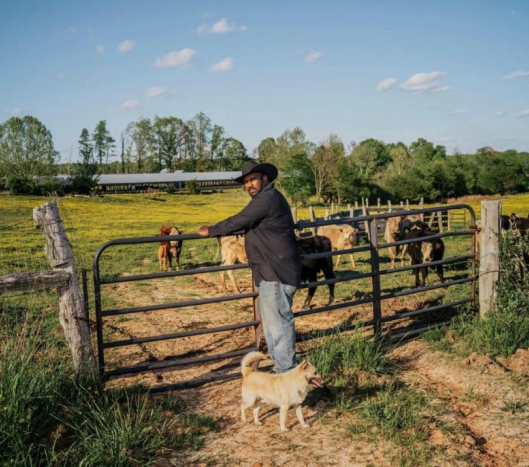
Menu
There were nearly a million black farmers in 1920. Why have they disappeared?
John Boyd Jr’s grandfather Thomas, the son of a slave, slept with the deed to his farm under his mattress. He worried constantly that his land would be taken from him.
Twenty miles away and three generations later, Boyd lives on his own 210-acre farm , in a big white colonial house with rows of soybeans that go almost up to the front door, like other people have grass. One hundred cattle, a cluster of guinea hogs, three goats and a small herding dog named Fatso, whom Boyd calls his best friend, live there.
He feels more secure on his plot of land than Thomas did. But Boyd is an aberration.
The number of black farmers in America peaked in 1920, when there were 949,889. Today, of the country’s 3.4 million total farmers, only 1.3%, or 45,508, are black, according to new figures from the US Department of Agriculture released this month. They own a mere 0.52% of America’s farmland. By comparison, 95% of US farmers are white.

The black farmers who have managed to hold on to their farms eke out a living today. They make less than $40,000 annually, compared with over $190,000 by white farmers, which is probably because their average acreage is about one-quarter that of white farmers.
As a fourth-generation farmer, Boyd has witnessed other black farmers do the same thing he’s done: claw at the dirt in an attempt to hold on to it. And Boyd has devoted himself to helping other black farmers, always remembering the words he heard his grandfather Thomas mumble over and over: “The land don’t know color. The land never mistreated me, people do.”